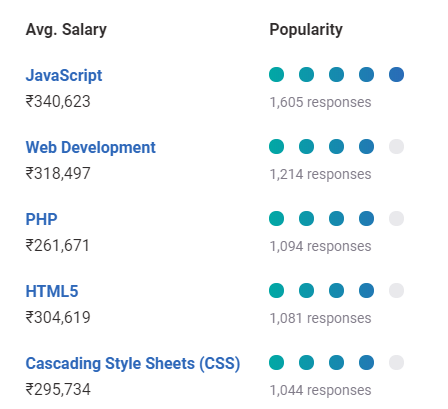
You should consider a few key aspects when designing your mobile app design. This includes following the latest trends, avoiding informational clutter, making sure that the user experience is smooth, and making sure you follow the latest UI design trends. Using these elements in your app mobile design will ensure that your customers are happy with your work.
Keeping up with UI design trends
Mobile app design trends are constantly changing, so it is important to keep up-to-date. Keeping up with these trends can help you create app designs that are relevant to your customers' needs. There are many methods to keep on top of these trends. For example, you can attend UI design networking events regularly. Participating in design challenges and reading relevant blogs is another way to keep abreast of current trends. This will ensure that you are always ahead of your competitors.
Your app's UI design should include 3D elements. This will help it stand out and attract users. AR technologies continue to make 3D apps more popular. Dark mode is another UI trend worth watching. This feature allows the user to lower screen brightness, and even turn the screen black, which reduces eye strain.

Easy-to-use interface
The user interface for mobile apps is one of the most important elements. It should be user-friendly and intuitive. Creating a great user interface can increase your revenue by up to 23%. A lot of apps have many utilities. But a simple interface that is easy to use is crucial for your app's success.
You should make the user experience your top priority. This means designing an interface that is as simple and intuitive as possible. Be aware of the screen's size and shape. If possible, try to create an app that is usable in portrait and landscape orientations. Users should be able simply to swipe up and down to switch pages, without needing to use their thumbs. It is best to avoid unnecessary software bloat. This will confuse users and make it difficult for them to use the app.
Informational clutter is best avoided
Avoiding informational clutter is one of the most important elements of mobile app design. Too much information can confuse users and make screens difficult to use. Limit the number of icons and interface elements in your design to keep it simple and uncluttered. An app that is simpler and more intuitive will be easier to use.
Creating a smooth navigational experience
A mobile app's design must include smooth navigation. Not only does it improve the user experience, it also helps decrease bounce rates and abandonment. It allows your app to appear stylish and functional, while still being responsive. You can also enhance your navigation using custom icons or well-used animations. Your interface should be optimized for various platforms. While utilizing all these elements is beneficial, you should not overdo it. It is important that every element in your design has a logical position and works well together.

A hierarchy in your mobile app can also help you improve it. The app will look more organized if users follow a funnel approach to navigation. They will know exactly what to do next, without having to guess or navigate. You should also minimize clutter by keeping icons and images small. To show useful content and to complement whitespace, you might consider card-style design patterns.
FAQ
Should I hire a web designer or do it myself?
If you are looking to save money, don't spend on web design services. Hiring someone else to make your website is a good option if you're looking for quality results.
You don't need to hire expensive web designers to create websites.
If you're willing to put in the time and effort, you can learn how to make a great-looking site yourself using free tools like Dreamweaver and Photoshop.
Another option is to hire a freelance web developer for a project that charges per hour.
How Do I Create a Free Website?
This will depend on the type and purpose of your website. Are you looking to sell products, build a website, or create a portfolio online?
It is possible to create a basic website with HTML and CSS (a combination HyperText Markup Language & Cascading Style sheetss). While it's possible to create a simple website using HTML and CSS, most web developers recommend using a WYSIWYG editor such as Dreamweaver or Frontpage.
If you don't have experience designing websites, hiring a freelance developer might be the best option. They will help you design a website that suits your specific needs.
A freelance developer can charge you a flat fee per project or hourly rate. It depends on the amount of work that they do in a given time frame.
One example is that some companies charge $50-$100 for an hour. Larger projects will usually attract higher rates.
You can also find jobs on many freelance websites. It is possible to search on these websites before reaching out directly to potential developers.
Can I Use A Template Or Framework On My Website?
Yes! A lot of people use prebuilt templates or frameworks to create websites. These templates have all the code you need to display your information on your website.
These are some of the most requested templates:
WordPress – One of the most well-known CMSes
Joomla - Joomla! - another open source CMS
Drupal – An enterprise-level solution used by large organizations
Expression Engine is a Yahoo CMS that allows you to create custom CMS sites.
There are hundreds of templates available for every platform. It should not be difficult to find the right one.
How Much Does It Cost to Make An Ecommerce Site?
It depends on which platform you choose, and whether the freelancer is employed directly or through a service provider. eCommerce websites start at about $1,000.
However, once you decide on a platform, you can expect to pay anywhere between $500 and $10,000.
Templates are usually not more expensive than $5,000, unless you have a specific purpose. This includes any customization you need to make to fit your brand.
How much does a website cost?
The answer to this question depends on what you want to accomplish with your website. Google Sites may not be required if you simply want to provide information about yourself or your company.
However, if you want to attract visitors to your website, you'll likely want to pay for something more robust.
A Content Management System (like WordPress), is the most popular option. These programs make it easy to create websites without any programming knowledge. And because third-party companies host these sites, you won't need to worry about getting hacked.
Squarespace, a web design service, is another option. Squarespace offers a variety plans that range from $5 per person to $100 per person, depending on what information you want to include.
What platform is the best to design a site?
WordPress is the best platform for creating websites. It provides all the features you need to create a professional-looking site.
It is easy to customize and install themes. You can choose from thousands of free themes available online.
You can also install plugins to increase functionality. They allow you add buttons to social media and form fields, as well as contact pages.
WordPress is very easy to use. To modify your theme files, you don't need to be able to code HTML. You just need to click on the icon and choose what you want to modify.
There are many other platforms, but WordPress is my favorite. It has been around for years, and is still in use by millions.
Statistics
- Studies show that 77% of satisfied customers will recommend your business or service to a friend after having a positive experience. (wix.com)
- When choosing your website color scheme, a general rule is to limit yourself to three shades: one primary color (60% of the mix), one secondary color (30%), and one accent color (10%). (wix.com)
- In fact, according to Color Matters, a signature color can boost brand recognition by 80%. There's a lot of psychology behind people's perception of color, so it's important to understand how it's used with your industry. (websitebuilderexpert.com)
- It enables you to sell your music directly on your website and keep 100% of the profits. (wix.com)
- Did you know videos can boost organic search traffic to your website by 157%? (wix.com)
External Links
How To
Drupal 7 Web Design Guide
Drupal is one of the most popular Content Management Systems (CMS) available today. It was developed back in 2003 by Dries Buytaert from Belgium. Named after the names of its two developers, Dirk Buijtewaard (from Belgium) and Pierre d'Herbemont (from France). Drupal was opened source in 2005. Since then there have been many versions. Today, Drupal is used by many websites and companies around the world.
Drupal is popular because of many reasons. First, it is free to download and install. Second, it is easy to customize and extend. Third, it is very well documented. It provides tremendous support via IRC channels and forums. Fifth, it is extensible via modules. Sixth, it can support multiple languages. It is also easily customizable. It can be scaled. It is also secure. Tenth, it is reliable. Finally, it is supported and maintained by the community. Drupal is a great choice for your next project because of all these factors.
You might be wondering what makes Drupal unique from other CMSs. It's easy. Drupal is an open source content management system. Drupal is free to download and use. Drupal allows you to have full control of your website. You can add and remove pages, change colors, fonts and images, as well as modify videos.
Drupal is an option for those who lack the technical skills required to create websites. Drupal, unlike other CMS, doesn't require you to know programming to build your website. To use Drupal, you only need to understand the basics. Then you will be able to modify your website according to your needs.
Drupal also offers many pre-built themes as well as plugins. These plugins allow you to improve the functionality of your site. You can use Contact Form to gather visitor information. Google Maps is another option to show maps on your website. There are thousands of ready-made templates that come with Drupal. These templates will give your website a professional appearance.
Moreover, Drupal is highly flexible. Drupal can be used to create new modules or to replace existing ones. If you're looking to integrate social networking into your site, you can do this quickly. You can also create RSS feeds and e-mail subscriptions.
Drupal's flexibility is also a plus. You can add custom fields and forms, manage users, and more. Drupal also allows for complex layouts.
Drupal is reliable and robust. It is stable and can scale. It offers outstanding security features. Drupal is well worth looking into if you are looking for a web development platform that works.